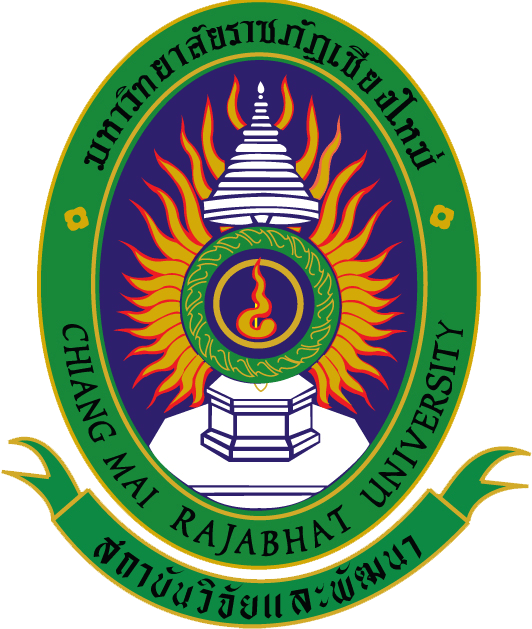
ระบบสารสนเทศงานวิจัย สถาบันวิจัยและพัฒนา มหาวิทยาลัยราชภัฏเชียงใหม่
Research Information System(RIS)
Characterizing The Design And Economics Components of Jew Ellery Industry into Design omics Model.
อาจารย์จารุวรรณ เพ็งศิริ
คณะมนุษยศาสตร์และสังคมศาสตร์
คำสำคัญ :
เลขทะเบียน :
1505-64-HUSO-CMRU
บทคัดย่อ
งานวิจัย เรื่อง DESIGNOMICS MODEL เพื่อการพัฒนาผลิตภัณฑ์ท้องถิ่นชาติพันธุ์ม้ง บ้านแม่สาใหม่ อำเภอแม่ริม จังหวัดเชียงใหม่ มีวัตถุประสงค์การวิจัย คือ (1) เพื่อศึกษาบริบทชุมชน การประกอบการ และรูปแบบเครื่องประดับเงินของผู้ประกอบการ หมู่บ้านแม่สา ตำบลโป่งแยง อำเภอแม่ริม จังหวัดเชียงใหม่ (2) สร้างแนวทางการออกแบบผลิตภัณฑ์เครื่องประดับเงิน เพื่อเป็นแนวทางการออกแบบในระบบหัตถอุตสาหกรรม (3) ศึกษาเปรียบเทียบรูปแบบเครื่องประดับกลุ่มชาติพันธุ์ ระหว่างผู้ประกอบการของประเทศไทย และผู้ประกอบการในประเทศมาเลเซีย (4) ศึกษากระบวนการถ่ายทอดภูมิปัญญาท้องถิ่นของชาติพันธุ์ม้ง ของหมู่บ้านแม่สา (5) เพื่อพัฒนาต้นแบบผลิตภัณฑ์ที่สื่อสารถึงอัตลักษณ์ของชาติพันธุ์ม้ง หมู่บ้านแม่สา ตำบลโป่งแยง อำเภอแม่ริม จังหวัดเชียงใหม่ เครื่องมือในการวิจัยได้แก่ แบบสัมภาษณ์แบบเจาะลึก (in-depth Interview) ประชากรและกลุ่มตัวอย่าง ได้แก่ ผู้ประกอบการเครื่องเงิน ในหมู่บ้านแม่สา ตำบลโป่งแยง อำเภอแม่ริม จังหวัดเชียงใหม่ และผู้ประกอบการ ชาติพันธุ์ Mah Meri tribe in Selangor, Malaysia โดยสุ่มแบบเจาะจง (Propulsive Sampling) ผลการวิจัยพบว่า การสร้างสรรค์ผลงานเครื่องประดับเงินของผู้ประกอบการมีรูปแบบที่มีแรงบันดาลใจจาก (1) ธรรมชาติรอบตัว (2) รูปร่างเรขาคณิต (3) รูปแบบประยุกต์ แนวทางการออกแบบเครื่องประดับมีหลักคิดสำคัญ 3 ประการได้แก่ ด้านความงาม (Aesthetics) ด้านเศรษฐกิจ (Economics) และด้านสังคม (Social Responded) การเปรียบเทียบรูปแบบเครื่องประดับ พบว่า เครื่องประดับที่ใช้เหมือนกันคือ กำไล สร้อยคอ และเครื่องประดับศีรษะ แต่จะมีการใช้วัสดุที่แตกต่างกันคือ ชาติพันธุ์ม้งจะนิยมใช้วัสดุโลหะเงิน ส่วนชาติพันธุ์ Mah Meri จะนิยมใช้วัสดุจากธรรมชาติ เช่น ไม้ไผ่ หวาย เปลือกไม้ และพืช เป็นต้น การถ่ายทอดภูมิปัญญา พบว่า มีวิธีการถ่ายทอด 2 รูปแบบ คือ 1) ใช้วิธีสาธิต และ 2) ใช้วิธีการปฏิบัติจริง ผลงานต้นแบบผลิตภัณฑ์ จำนวน 2 ชุด ซึ่งเป็นผลิตภัณฑ์ที่มีรูปแบบร่วมสมัย
Abstract
Characterizing The Design and Economics Components of Jewellery into Designnomics Model among Indigenous Community Between Malaysia and Thailand. The research objectives are (1) To come out the characteristics of jewellery products in relation to design and economics components (2) To propose a new formula of design and economic consideration as functional guidelines for the jewellery design industry (3) To investigate the accessories of the indigenous groups in Thailand and Malaysia (4) To explore how knowledge regarding accessories of indigenous group is passed on from one generation to generation (5) To design a Product that represents identity of indigenous group in Thailand. Research tools are in-depth interview. The population and sample were silverware entrepreneurs in Mae Sa Village, Pong Yang Subdistrict, Mae Rim District, Chiang Mai Province and entrepreneur of Mah Meri indigenous in Selangor, Malaysia were selected by propulsive sampling. The results showed that Entrepreneurs' silver jewelry creations are inspired by (1) surrounding nature (2) geometric shapes (3) applied patterns. (Bringing the product form from another or modern applied to their own work) and the jewelry design approach uses a concept that has 3 important concepts: Aesthetics, Economics and Social Responded Component. Comparing the styles of jewellery, it was found that the same jewellery was bracelets, necklaces and head ornaments. But will use different materials. The Hmong ethnic people prefer to use silver metal materials. The Mah Meri ethnic group prefers to use natural materials such as bamboo, rattan, bark and plants, etc. In transferring wisdom, it was found that there were two methods of transferring which were 1) demonstration methods and 2) practice methods. Two sets of product prototypes, which are contemporary style products.
ไฟล์งานวิจัย
02.2 บทคัดย่อ (ภาษาอังกฤษ).pdf
06 บทที่ 2 เอกสารและงานวิจัย.pdf
07 บทที่ 3 วิธีการดำเนินการวิจัย.pdf
ข้อมูลการตีพิมพ์
ชื่อบทความ :
แหล่งที่ตีพิมพ์ :Journal of Tourism, Hospitality & Culinary Arts (JTHCA)
ปีที่ตีพิมพ์ :2566
15 07 ต.ค. 2564
กองทุนวิจัย มหาวิทยาลัยราชภัฏเชียงใหม่
202 ถ.ช้างเผือก ต.ช้างเผือก อ.เมือง จ.เชียงใหม่ 503000
053-88-5555